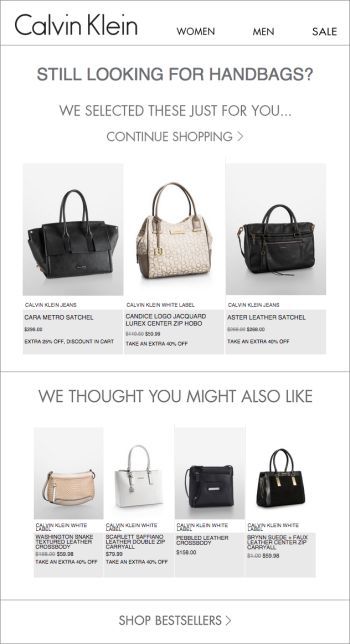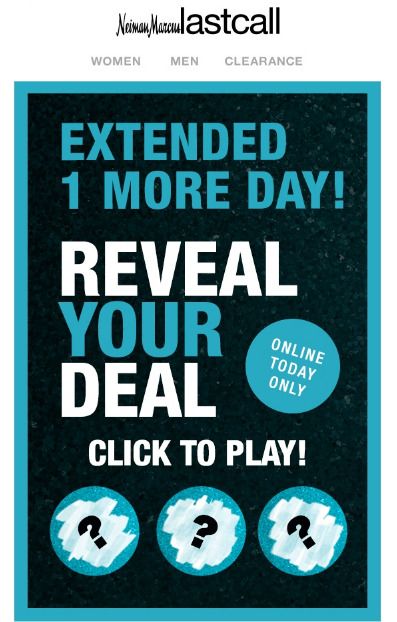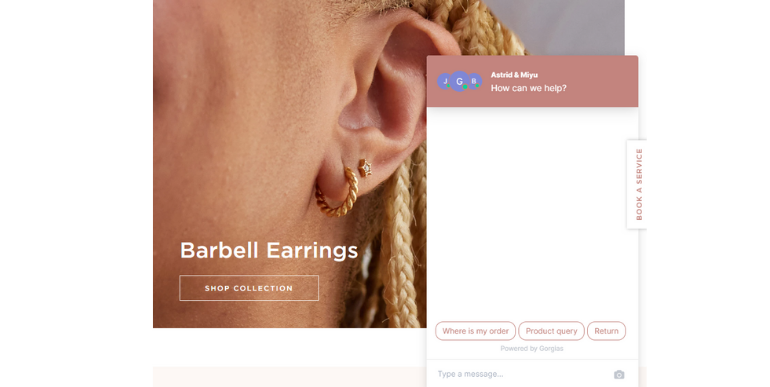What is customer engagement and why is it important?


We’re all used to hearing about customer engagement. Nowadays it feels like every marketing article we read talks about customer engagement, but what does it really mean?
And, better yet, how do we do it?
Customer engagement has been a buzzword for a while now. The internet is packed with articles about creating ‘meaningful customer engagement’. At Dotdigital, we’re guilty of it too. As a customer experience and data platform (CXDP), we have the tools you need to connect with customers and our learning resources are packed with advice on how to drive cross-channel customer engagement.
But what does it really mean when we refer to ‘customer engagement’ is it really as important as people say? We want to demystify this buzzword. In this article, we’re going to explore what customer engagement is, how important it is, and give you some hints and tips about engaging customers online.
What is customer engagement?
The internet is littered with various definitions of customer engagement, but one thing they all share is this: customer engagement is about the interactions between you and your customers. These interactions can happen on a variety of channels and help strengthen your relationship with customers.
Customer engagement begins with a customer’s first interaction with your brand and extends beyond the point of purchase. Ongoing interactions between your brand and your customer are a clear sign your customer is engaged. Customers consuming content on social media, websites, blogs, and email marketing are all engaging with your brand.
Delivering cross-channel experiences gives customers the choice to decide where they engage with you. By offering them a choice, you’ll be able to discover the type of interaction and content they find valuable. This will ultimately lead them to develop a stronger emotional bond with your brand.
You need to deliver content and experiences that add value to create meaningful customer experiences. When customers feel as though they are getting more than just a product or service from your brand, they connect to your brand.
Why is customer engagement important?
Brands are so often concerned with acquisition, clicks, and conversions, that it can be easy to forget the importance of the moments in between. Engaging customers between and beyond purchases will strengthen their emotional connection with your brand. Stronger connections between your customer and the brand will help you retain your hard-won customers.
Beyond simply driving customers down the marketing funnel, customer engagement is about connecting beyond the key touchpoints in your customer journey. Successful customer engagement will keep your brand at the top of the customer’s mind when it comes to the decision-making process. It’ll also make them more responsive to your marketing efforts.
Cross-selling, up-selling, and average order value are just a few metrics that will increase as your customer engagement improves.
The benefits of customer engagement?
Investing time and effort in customer engagement can bring many benefits to your marketing, driving growth and improving customers’ relationships with your brand. Here are several advantages of prioritizing customer engagement as part of your marketing strategy:
Higher customer retention and loyalty
When customers are engaged, they tend to stick with your brand for a long time. This can help to reduce the number of customers who leave your brand while increasing the lifetime value of each customer. When customers feel connected to your brand, they are more likely to become loyal customers who recommend your products to their friends and family.
Higher customer satisfaction
By creating a personal relationship with your customers, you can increase their satisfaction and trust in your brand. When customers feel valued and respected, they are more likely to have positive feelings towards your brand. This can help create a positive image of your brand in their minds and encourage them to choose your brand over competitors.
Improved brand reputation and presence
By engaging with your customers through social media and other channels, you can help to boost your brand’s reputation and presence in the market. When customers have positive experiences with your brand, they are more likely to share those experiences with others. This can help to increase your brand’s reach and attract new potential customers.
Greater competitive advantage
In today’s crowded marketplace, brands that excel at customer engagement have a distinct advantage over those that don’t. By delivering exceptional customer experiences, fostering emotional connections, and consistently exceeding customer expectations, your company will gain a competitive edge that propels growth and attracts new customers.
How to measure customer engagement?
As marketers, we understand the importance of metrics. If we’re going to dedicate our precious time and resources to improving customer engagement, we need to know how to measure the outcomes of our work.
Below are just some of the ways you can start measuring customer engagement levels. Of course, depending on your business and your goals, your definition of engagement may rely on different results, but these are a good place to start.
Average order value (AOV)
The average order value is the average amount customers spend when they make a purchase. This number will tell you how much customers generally spend when shopping on your website. Repeat customers spend about 7x times more than one-time or new shoppers.
This means the higher this metric is, the more repeat customers are returning to your website. If you’re retaining more customers, that’s a clear indication that your engagement efforts are working.
Social interactions
On social media, the total number of interactions is a great way to measure engagement levels. Replies, likes, retweets, comments, and tags will give insight into how successful your social campaigns are. It will also reveal the type of content your audience values. This should help inform your marketing strategy in the future.
Social media ‘impressions’ are not a sufficient way to measure engagement because it is used to measure advertising reach. That means users are only engaging passively – if at all – as they scroll past.
Purchase frequency
Purchase frequency refers to how often customers complete a purchase online or at your store. You can calculate this by dividing the number of orders in the last 365 days by the number of unique customers in the same period.
No. orders in the last 365 days / no. unique customers in the last 365 days
This will help you get a better understanding of your customer lifecycle. When you know how long it takes your average customer to make another purchase you can see how engaged they are and where you need to ramp up your engagement efforts.
Repeat purchase rate
Your repeat purchase rate is the percentage of customers who have made more than one purchase within a set timeframe. This rate will give you a clearer idea of the effectiveness of your customer retention and engagement strategy.
To calculate this rate, you simply need to divide the number of customers who have made more than one purchase over a set period by the total number of customers in the same period.
Newsletter open rates
Email marketing metrics can be tricky to measure customer engagement. This is mainly because email marketing typically involves multiple campaigns going to varied, segmented customer databases. To measure customer engagement with your email marketing, it’s best to focus your metrics on a single campaign going to the bulk of your contacts.
Newsletters are the best option – especially if you send traditional, content-focused newsletters, as opposed to sales-driving newsletters. From there, you can draw insight from open and click-through rates on a daily, weekly, or monthly basis.
Pages per session
How many web pages a customer visits in a single visit to your website (“session”) is a great indicator of how helpful and engaging your content is. The higher the number of pages per session the more interested customers are in your brand and your products. If your numbers are low, there may be a problem with your site structure or the quality of your content.
Tracking this will help you identify any issues, making planning, and improving your customer engagement strategy in the future easier.
Net promoter score (NPS)
NPS is used to measure customer loyalty and how likely customers are to recommend your brand to their peers. You can collect this data by regularly surveying your customers. For quantitative results, you can ask customers to rate their experience with your brand on a numerical scale:
“On a scale of 1 to 10, how likely are you to recommend us to a friend?”
Or, for more insightful, qualitative feedback, you can use open-ended questions to find areas of your experience to optimize and improve:
“How could we improve your experience?”
How to engage customers online
Engaged customers are good for business. They have a stronger, more emotional connection with your brand. The more engaged they are with your brand, the more they’re going to spend with you, ultimately having a positive effect on your bottom line too.
So, how do we start engaging customers better online?
1. Personalized experiences
Modern customers don’t like impersonal marketing. 72% of consumers say they only engage with personalized marketing messages. With such a high demand for personalized customer experiences, you must make it a core part of your customer engagement strategy.
Due to the meteoric rise of ecommerce giant Amazon, shoppers expect personalized product recommendations to elevate their experience.

However, this is just one way you can personalize customer experiences. Asking customers what they want is a quick win. Using your preference center, you can gather all the data you need to deliver one-to-one experiences.
You can also use behavioral data to delight customers with unique interactions with your brand. Using purchase or browsing history in your content is a great way to show customers you know them.
2. Gamification of content
Gamification is set to take the marketing world by storm. By adding this to your email marketing, you’re giving customers a reason to engage with your marketing for longer.
From a consumer psychology perspective, gamified content creates a positive association with your brand.
When customers play and win, they’re more likely to remember your brand and engage again in the future. These are fun experiences that require greater engagement from audiences than watching a video. They have to actively participate to gain the benefits, making it one of the ultimate tactics for customer engagement.

3. Loyalty programs
Loyalty programs are a great way to give back to your customers. When they feel as though their valued, as though they are getting back as much, if not more than they invest in you, their connection with your brand will be stronger than ever.
When you use a tier or points-based loyalty program you’re adding value to every interaction a customer has with your brand. This helps make them more invested in your brand. If they don’t shop with you, or enter your social media competition, they will miss out on the additional value they could earn.
Maximize their fear of missing out – the FOMO effect – by implementing a loyalty program that’ll boost their long-term engagement and keep driving them back to you.

4. Chat widgets
Live Chat is not only great at removing obstacles on the path to purchase, but they’re brilliant for year-round engagement with your audience.
It’s a one-to-one engagement on a grand scale. If a customer has a product query or concerns about delivery, your team is on hand to handle it, before it becomes a problem. This level of quick and efficient customer care will raise you high about the competition.
By making your customer services teams available to customers, brands are demonstrating their commitment to the customer experience. And when a customer feels that, they’re going to develop a stronger emotional bond with your business. Putting the customer’s needs first is always a winning tactic.

5. Social competitions
Running competitions on social media is a great way to boost engagement if ever you see your numbers dipping.
Using a competition on social media, you can get customers to share, retweet, comment, or tag your brand. This not only encourages them to engage with your marketing for a chance to win, but it also turns them into ambassadors, helping to amplify your brand to their followers who may be unfamiliar with you.
Simply having customers follow your brand on social goes a long way toward keeping them engaged over time.

Final thoughts on customer engagement
Customer engagement isn’t solely about driving profits – although that is a massive benefit of an engaged database.
It’s about empowering customers to interact with your brand on the channels they want and delight them with unique and personalized experiences. The more you do this, the stronger their connection to your brand will be. Engaging customers and adding value to their experience will keep your brand at the front of their minds.
The better engaged they are, the longer you’ll be able to retain them, and the more loyal they will be to you. Ultimately, this will help your business grow, reduce customer churn, and increase your company profits as loyal customers spend more money with you.


